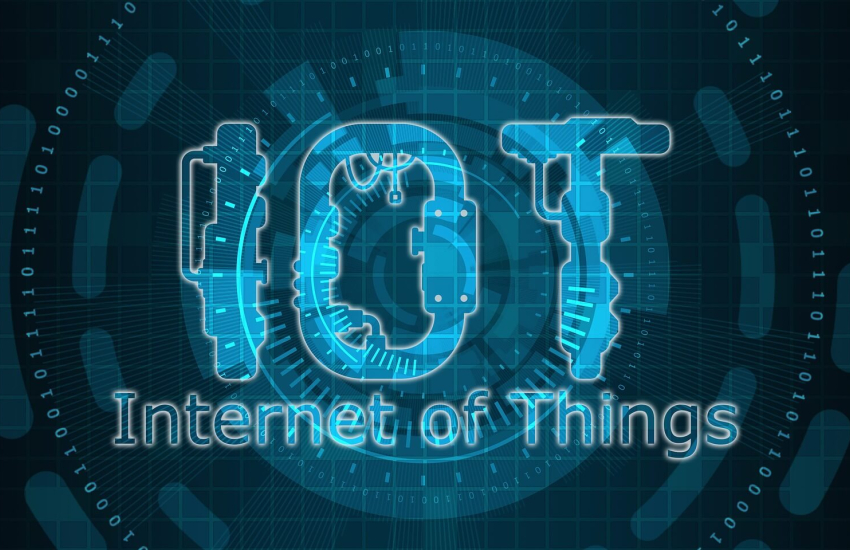The Importance of IoT Security: Safeguarding Your Connected World
When devices are connected to the internet, they are vulnerable to security breaches if not protected. Therefore, the importance of security measures for IoT is evident, especially if you’re running a business.
IoT devices handle a sea of data, and a cyber attack can steal crucial and valuable information, disrupt the function of the devices, and cause a business to face tremendous losses. Let’s learn the importance of security measurement for your IoT devices and the best practices you can follow.
Understanding IoT Security
Internet of Things (IoT) devices, such as cloud cameras, routers, and smart fridges, are connected to the internet. IoT security prevents network breaches and threats by securing these devices.
Without proper security measures, IoT devices are vulnerable to attacks, leading to distributed denial-of-service (DDoS) attacks, compromised networks, and data theft.
IoT devices do not have built-in security measures like a phone or a computer. Therefore, they transmit data without proper encryption.
Therefore, IoT security prevents data breaches by implementing proper protection mechanisms. This process is complicated and vast and usually involves blocking unnecessary ports, using nano-agents, and firmware security, among other things.
Risks of Inadequate IoT Security

Unlike your computer or phone that runs its operating systems on top of its firmware, IoT devices’ firmware is essentially the operating system. Not having an intricate operating system means that these devices are unable to implement strong security measures to prevent network threats.
These are some of the most common risks of having improper IoT security:
- Poor processing power: Most IoT devices are not implemented with strong processing power and, therefore, cannot use too much data. As a result, security features like end-to-end encryption, firewalls, and antivirus are basically not present in these devices.
- Weak authentication: Passwords or other authentication methods are rare in IoT devices. And even if there are such features, they are not usually as strong as you’d see in your phone.
- Shared network: IoT devices sharing the same network are great for easier management. However, this feature, in turn, could make the entire network vulnerable, along with the devices connected to it.
- No encryption: Data transmitted by most IoT devices are not encrypted. Therefore, any party wanting to access the data can do it with ease.
Examples of Major IoT Security Breaches in Recent Years

Unfortunately, IoT breaches are not uncommon. The concept of controlling devices such as cameras, appliances, and other similar technology over the internet is a pretty recent one. Therefore, DOOR proper security measures are not present in first-generation products.
Here are some real-world examples of massive data and security breaches related to IoT:
Ring Home
There have been two instances of security breaches related to an Amazon-owned brand called Ring. Firstly, Ring doorbells accidentally reveal user data to Facebook and Google. Another time, Ring cameras were hacked, allowing the culprits to access live video feeds and also communicate and harass the owners of the cameras.
Nortek Security & Control
In 2019, cyber security company Applied Risk researched Nortek Linear eMerge E3, something popularly used by businesses all over the world to replace traditional lock and key systems. The firm discovered vulnerabilities in those devices, which would allow hackers to steal data, launch DDoS attacks, and plant malware.
Despite their research, many businesses continued using Nortek, and thousands faced security breaches in around 100 countries.
Discussion of Potential Consequences
Without security, IoT networks and devices are vulnerable to many ugly consequences. Some examples are given below:
- Lack of Authentication: IoT devices without strong security don’t have proper authentication methods. Therefore, anyone can access the devices, manipulate settings, misuse sensitive data, and even delete important data.
- DDoS Attacks: DDoS attacks will leave your entire network at risk and can bring severe interruptions.
- Botnet Attacks: Botnets use malware to access IoT devices and attack businesses.
- AI-Powered Attacks: Hackers have been using AI for years to automate their attacks and make them more effective. Without basic security, any organization using IoT is vulnerable to such breaches.
Best Practices for IoT Security

In today's interconnected landscape, safeguarding Internet of Things (IoT) devices is paramount to protect against potential threats. Here are the best practices when it comes to IoT security:
- Having Unique Credentials for Each Device: Each of your IoT devices should have a unique cryptographic credential. You can use identities like X.509 certificates to have secure authentication. Moreover, using trusted platform modules (TPMs) or other hardware-protected modules can provide an additional layer of protection.
- Implementing Authentication and Access Control: Setting clear trust boundaries and implementing access rules are crucial. You can improve security by discovering and mitigating vulnerabilities that allow for identity forging or unauthorized privilege escalation. Using authentication mechanisms without hardcoded passwords and securing physical device access strengthens your IoT ecosystem.
- Using Cryptographic Network Protocols: Software development kits (SDKs) help secure the connection between IoT devices and the cloud, essentially providing encryption.
- Updating Devices: Having the latest software updates installed in your IoT devices prevents the risk of attacks by a great margin.
- Monitoring Signs of Security Breaches: Regular audits of IoT devices and networks allow you to take preventative measures whenever you discover signs of attacks.
Exploring Emerging Technologies for IoT Security
With the lack of security being one of the biggest problems with IoT, new technologies are being implemented and invented to make IoT much safer for personal and professional use. Here are some leading examples of emerging security technologies for IoT:
- Blockchain: Blockchain will be able to provide data security to IoT devices while also opening up new avenues of use cases.
- Security Chips: On the hardware side, security-enhancing low-powered modules will make IoT devices stronger from the inside.
- SASE: Secure Access Service Edge (SASE) is a security model made to address the security challenges of modern IoT devices.
The Role of Government and Industry
Government enforcement and laws are stepping in to ensure security in the field of IoT. The following are some of the key players according to an AWS report:
- US Department of Defense – Recommending policies addressing IoT risks
- National Institue of Standards and Technology – Leading many whitepapers and industry initiatives to define and decrease the risk of IoT ecosystems
- Federal Trade Commission – Taking action against device manufacturers who fail to meet the reasonable data security bar
For more information, check out Appendix 2 – Government involvement in IoT.
The Future of IoT Security
The future of IoT security will involve:
- Proper data monitoring
- Backup integration
- Advancement of automotive IoT
Conclusion
While IoT has proven itself to be a marvelous invention for both homes and businesses, security concerns are still there. Therefore, it’s essential to invest in secure devices and systems to prevent data breaches and other attacks.


